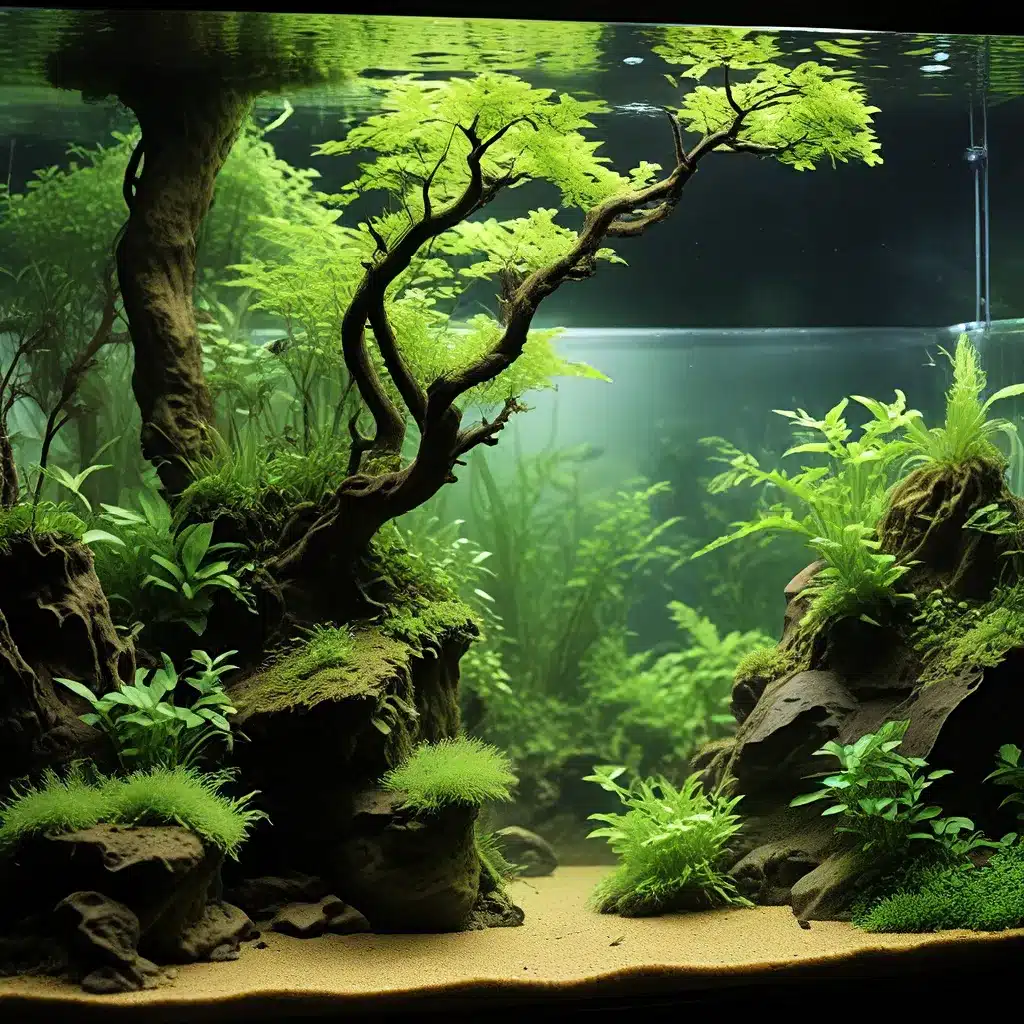
Captivating Aquascapes: Unlocking the Potential of Paludariums and Ripariums
In the vibrant world of aquarium keeping, there exists a unique realm where land and water converge, creating mesmerizing underwater landscapes. Paludariums and ripariums are two such aquatic wonders that have captured the imagination of aquarists and plant enthusiasts alike. These specialized aquarium setups offer a captivating blend of aquatic and terrestrial elements, allowing for the creation of truly remarkable aquascapes.
Navigating the intricate balance between submerged and emersed plant growth, paludariums and ripariums present aquarists with a canvas upon which they can unleash their creativity. By understanding the nuances of these unique systems, hobbyists can cultivate breathtaking ecosystems that not only captivate the eye but also provide a harmonious environment for a diverse array of aquatic and semi-aquatic species.
Paludariums: Bridging the Aquatic and Terrestrial Realms
At the heart of a paludarium lies the integration of aquatic and terrestrial elements, creating a captivating hybrid environment. These setups typically feature a partially submerged substrate, with a distinct water line that separates the aquatic and terrestrial zones. This distinct arrangement allows for the coexistence of aquatic plants, such as Cryptocoryne and Anubias, alongside their amphibious and terrestrial counterparts, such as mosses and ferns.
The design of a paludarium can be highly versatile, ranging from compact desktop setups to expansive aquarium-based environments. One of the key challenges in creating a successful paludarium lies in maintaining the delicate balance between the aquatic and terrestrial elements. Aquarists must carefully consider factors such as water parameters, lighting, and substrate composition to ensure the thriving coexistence of all inhabitants.
Ripariums: Emersed Plant Oases in the Aquarium
Ripariums, on the other hand, focus primarily on the emergent, or emersed, growth of aquatic plants. These setups typically feature a partially submerged substrate, with a significant portion of the aquarium dedicated to the emersed plant zone. This unique configuration allows aquarists to cultivate a diverse array of aquatic plants, including those that may not thrive fully submerged.
The emersed plant growth in a riparium can create a lush, verdant canopy that cascades over the water’s surface, providing a striking visual contrast to the submerged aquatic elements. This arrangement not only enhances the aesthetic appeal of the aquarium but also serves as a haven for semi-aquatic creatures, such as small amphibians or even certain fish species.
Designing Captivating Paludariums and Ripariums
Crafting a successful paludarium or riparium requires a deep understanding of the specific needs and preferences of the plants and animals involved. Aquarists must carefully select appropriate substrates, lighting, and water parameters to ensure the long-term health and vibrancy of their aquatic oasis.
When designing a paludarium, one must consider the placement and integration of both aquatic and terrestrial elements. The selection of hardy, adaptable plants, such as Anubias and mosses, can help ensure a thriving and aesthetically pleasing setup. Maintaining the appropriate water levels and providing adequate lighting for both submerged and emersed plants is crucial for the overall success of the paludarium.
In the case of ripariums, the focus shifts towards the emersed plant growth. Aquarists must carefully select plant species that are well-suited for this unique environment, such as Cryptocoryne and various aquatic ferns. Consideration must also be given to the water depth, substrate composition, and lighting requirements to support the vibrant emersed plant growth.
Embracing the Challenges of Aquatic Gardening
Maintaining a thriving paludarium or riparium is not without its challenges. Aquarists must be vigilant in monitoring water parameters, addressing potential pest or disease issues, and ensuring the proper nutrient balance for both submerged and emersed plants.
One of the key considerations in paludarium and riparium maintenance is the management of water quality. Aquarists must carefully monitor parameters such as pH, temperature, and dissolved oxygen levels to create an optimal environment for their aquatic and terrestrial inhabitants. Regular water changes, along with the use of appropriate filtration systems, are essential for maintaining water quality and promoting the overall health of the ecosystem.
Aquatic plant care is another critical aspect of paludarium and riparium management. Aquarists must be adept at identifying and addressing any nutrient deficiencies or pests that may threaten the vibrancy of their underwater gardens. The strategic use of liquid fertilizers and targeted pest control measures can help ensure the long-term flourishing of the aquatic and terrestrial plant life.
Embracing the Allure of Paludariums and Ripariums
As aquarists delve deeper into the captivating world of paludariums and ripariums, they are rewarded with the opportunity to create truly mesmerizing aquascapes. These unique setups offer a canvas for artistic expression, allowing hobbyists to blend the aquatic and terrestrial realms in a harmonious and visually striking manner.
Whether you’re a seasoned aquarist or a newcomer to the hobby, the allure of paludariums and ripariums lies in their ability to transport you to a realm where the boundaries between land and water blur, giving rise to a captivating aquatic oasis. By embracing the challenges and opportunities presented by these specialized aquarium setups, you can unlock a new level of creativity and immersion in the world of aquatic gardening.
So, embark on a journey of discovery and let your imagination soar as you unlock the secrets of paludariums and ripariums, creating a living, breathing work of art that will captivate and inspire all who behold it. Unlock the true potential of your aquarium and King Aquarium today.

